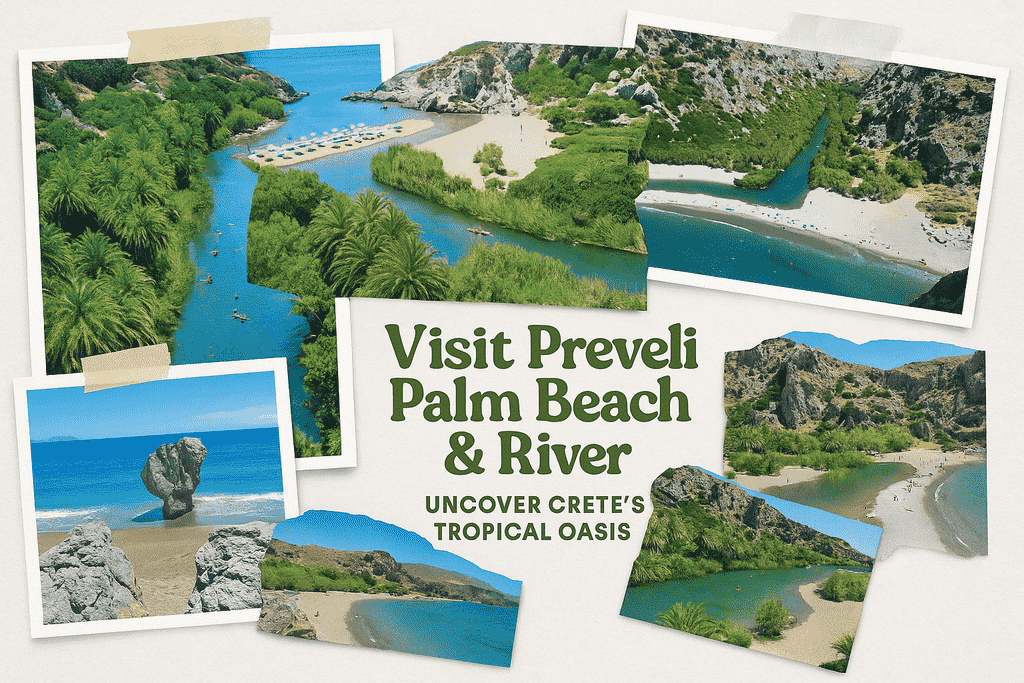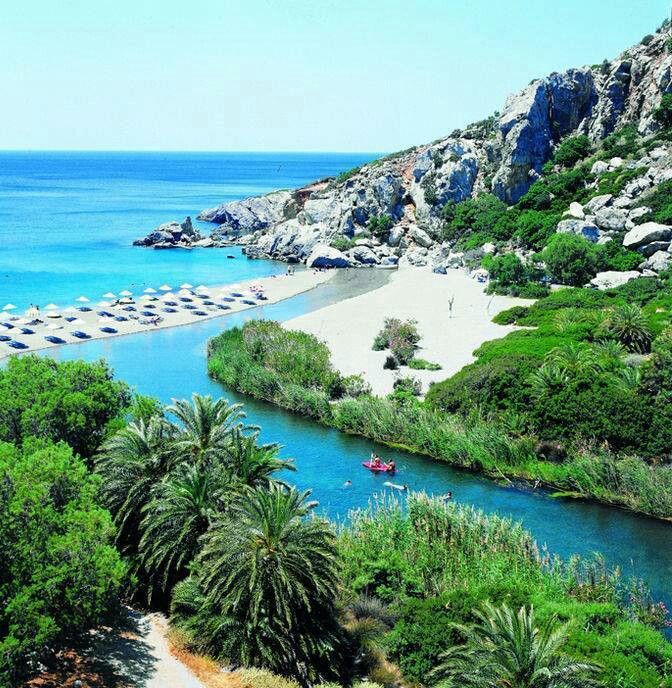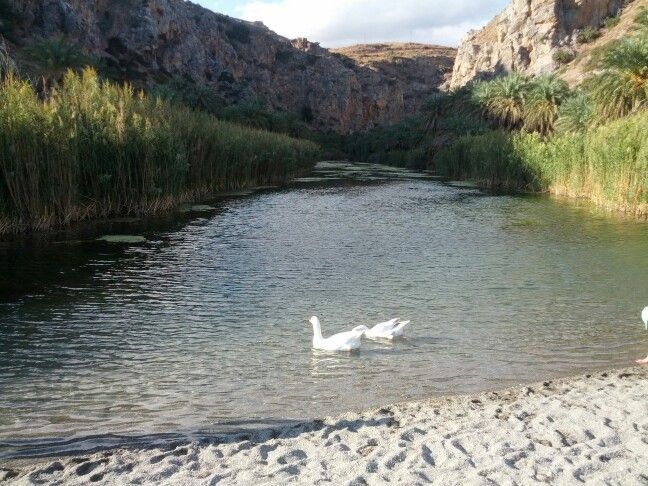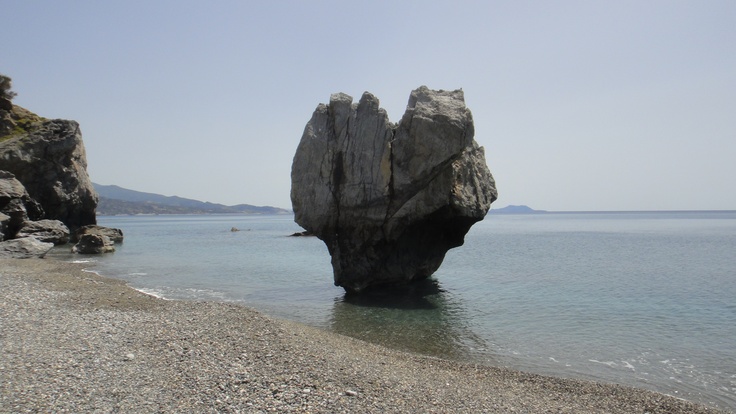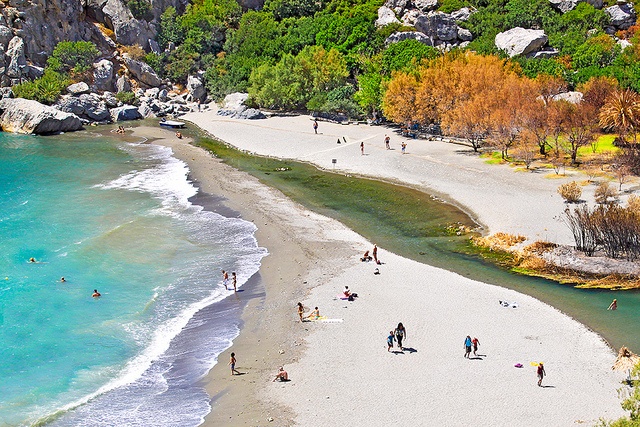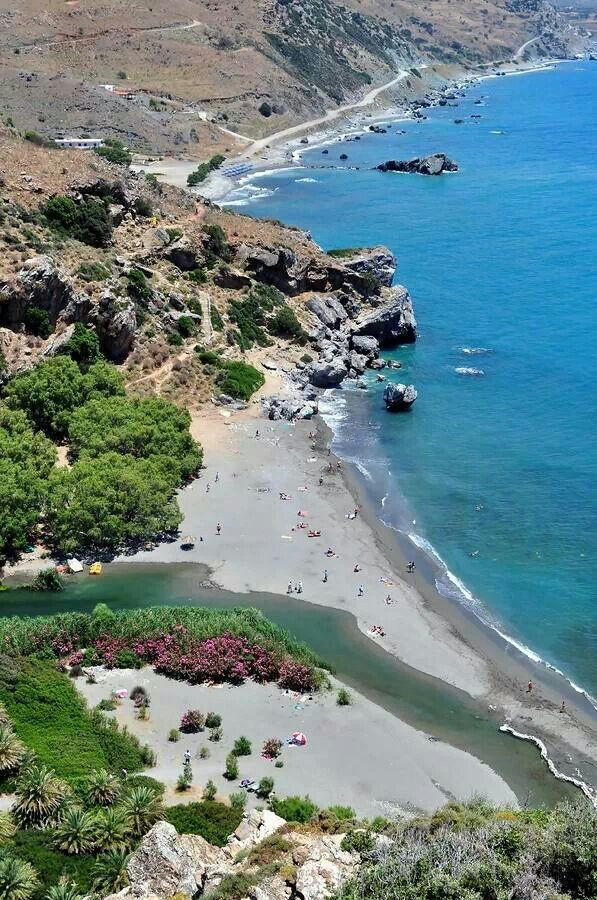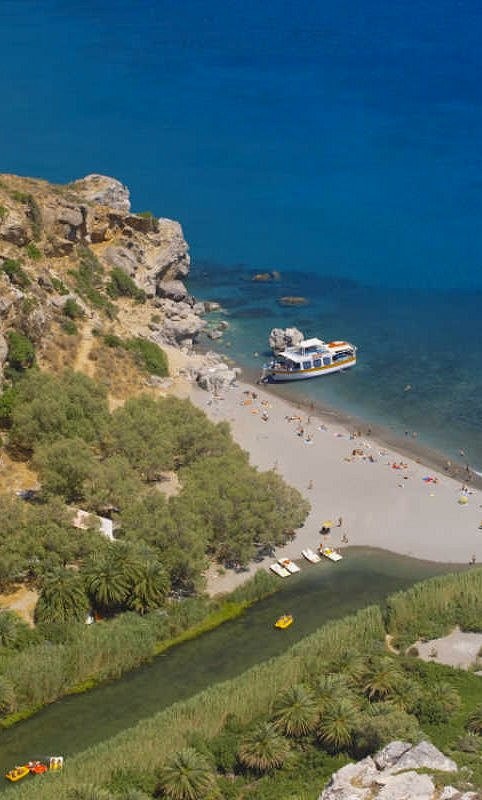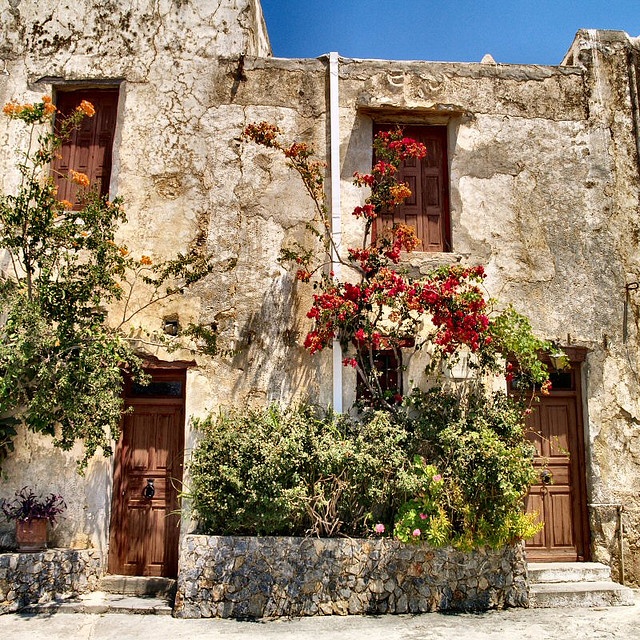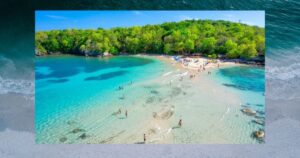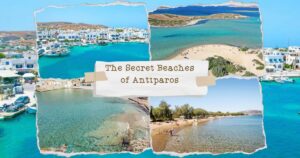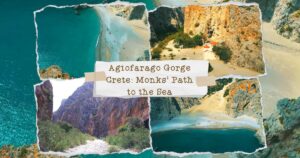Visit Palm Preveli Beach & River | Uncover Crete’s Tropical Oasis
If you’re dreaming of a place where rivers meet the sea, palm trees line freshwater banks, and adventure meets peace, then Preveli Beach and River in southern Crete should be on your travel list. This isn’t your typical Mediterranean beach. Preveli is wild, green, and full of contrast. The sweet scent of wild herbs in the air, the soft pebbles underfoot, and the exotic look of the landscape will make you feel like you’ve stepped into a different world. Whether you’re into hiking, swimming, photography, or simply relaxing in a natural setting, Preveli offers something unforgettable. Let’s dive into everything you need to know before visiting this hidden gem in Crete.
Where is Preveli Beach?
Preveli Beach is located on the south coast of Crete, in the Rethymno region. It sits at the mouth of the Kourtaliotiko Gorge, where the Megalopotamos River flows into the Libyan Sea. The nearest town is Plakias, about 12 km to the west, and the larger city of Rethymno is around 40 km away by road. This part of Crete is more rugged and less developed than the northern coast, which makes it perfect for those seeking a quieter, more natural experience.
What Makes Preveli Beach Unique?
Preveli Beach stands out because of its rare mix of a river, gorge, palm forest, and beach all in one place. The Megalopotamos River runs through a lush canyon filled with native palm trees. It forms a small freshwater lagoon before spilling into the sea. This creates a tropical vibe that’s unlike anything else in Crete. You can swim in the warm saltwater or in the cooler freshwater of the river. It’s also possible to walk along the riverbank under the palm canopy. This diverse setting makes Preveli a paradise for nature lovers, photographers, and anyone who appreciates off-the-beaten-path places.
How to Get to Preveli Beach
There are three main ways to reach Preveli Beach, and each offers a different experience. If you’re driving, you can park at the nearby Preveli Palm Forest parking area, located above the beach. From there, a steep footpath with stone steps leads down to the beach. It’s about a 15–20-minute walk down and a more intense climb back up. The view from the top is spectacular, so it’s worth it. Another option is to take a boat from Plakias or Damnoni. The boat drops you off directly at the beach, avoiding the hike. This is a great option for families or anyone who might find the trail too challenging. The third way is by hiking through the Kourtaliotiko Gorge, which offers a more adventurous approach. It’s a demanding trek but incredibly scenic.
What to Expect at the Beach
Once you arrive at Preveli Beach, you’ll find a long stretch of sand and pebbles with crystal-clear water. The beach is not organized like those on the northern coast, meaning there are no sunbeds or umbrellas. It’s a semi-wild beach, which adds to its charm. The river divides the beach, so you can choose to swim in the sea or the freshwater. Both are safe and beautiful. You’ll often see people wading through the river or paddling in inflatable kayaks. There’s a small tavern nearby (seasonal), where you can grab a snack, drink, or ice cream. But don’t count on a wide menu, and it’s best to bring your own food and water if you plan to stay for long.
Walking Along the River and Palm Forest
One of the best things to do at Preveli is to explore the palm forest along the river. You can walk upstream along the shallow water and follow a dirt path surrounded by Cretan Date Palms. The tall palms and the green undergrowth give it a jungle-like feel. The trail winds its way through shade and sunlight, passing by natural pools and rock formations. After about 20 minutes of walking, you’ll reach a small waterfall and deeper pools where you can swim. This hike is relatively easy, and you don’t need special gear—just good sandals or water shoes. It’s a cool escape from the sun and perfect for nature photos.
Best Time to Visit
The best months to visit Preveli are May through October. The palm forest is greenest in late spring and early summer. July and August are the hottest and busiest months. If you want fewer people and more comfortable temperatures, go in June or September. Early morning is the best time to arrive. You’ll avoid the midday sun, get the best light for photos, and have more of the beach to yourself. The water is warmest from late July to early October.
Entrance Fees and Costs
There is no entrance fee to visit Preveli Beach itself. However, if you park at the official lot above the beach, there is a small fee—around 2 to 3 euros for the day. Boat trips from Plakias cost about 10–15 euros per person round trip, depending on the season and operator. Food from the tavern can be slightly overpriced, with sandwiches or salads costing 6–10 euros and drinks around 2–3 euros. If you’re hiking, bring water and snacks. There are no shops nearby once you’re at the beach.
What to Wear and Pack
Wear light, breathable clothes for the walk and swimsuit underneath. Good walking sandals or hiking shoes are essential for the descent and river path. Flip-flops are not recommended for the trail. Bring a hat, sunscreen, and water, especially in the hotter months. If you plan to explore the river, water shoes are ideal. A small backpack with a towel, snacks, and a refillable bottle will make your day easier. A dry bag can be handy if you want to bring a phone or camera along the river.
Where to Stay Nearby
Plakias is the most convenient base for visiting Preveli. It’s a small coastal village with a relaxed vibe, beachside tavernas, and a good choice of hotels, studios, and hostels. Prices range from 30 to 80 euros per night depending on the season. Damnoni is even closer to the boat departure point and offers similar accommodations but fewer dining options. For a more immersive experience, you can stay inland in the village of Asomatos or in the mountain villages near Kourtaliotiko Gorge. These places offer traditional guesthouses and local charm.
History and Culture of Preveli
Preveli isn’t just a beach—it’s a place with deep cultural roots. The nearby Preveli Monastery, perched on a hill overlooking the sea, played an important role during World War II. The monks helped shelter Allied soldiers and Cretan resistance fighters. The monastery is still active today and welcomes visitors. It’s worth a visit on your way to or from the beach. The small museum there houses icons, relics, and photos that tell the story of its brave past. Entrance to the monastery is around 2.50 euros, and respectful clothing is required—no swimsuits or bare shoulders.
Tips for Photography and Drone Use
Preveli is incredibly photogenic. The best viewpoints are from the trail above the beach and along the river path. Early morning and late afternoon provide the softest light. Drones are allowed, but you should follow local regulations. Avoid flying over people and keep a respectful distance from the monastery. The contrast between the blue sea, green palms, and rocky cliffs makes for stunning aerial shots. If you’re using a phone, bring a polarizing lens attachment to reduce glare and enhance colors.
Is Preveli Beach Kid-Friendly?
Yes, but with a few considerations. The hike down from the parking lot may be too steep for younger children. In that case, taking the boat is the better option. Once on the beach, kids can safely play in the river or build stone towers along the shore. There are no lifeguards, so keep an eye on little swimmers. The shallow parts of the river are perfect for wading, and the area under the palm trees provides natural shade. It’s a good place for a family picnic, but be sure to bring all necessities with you.
Eco-Friendly Travel Tips
Help preserve the magic of Preveli by following basic eco-practices. Don’t leave trash—pack out everything you bring. Avoid stepping on the palm roots or picking plants. Use reef-safe sunscreen to protect the delicate ecosystem. If you’re exploring the river, don’t disturb fish or wildlife. Respect the peace of the place, especially near the monastery. Supporting local businesses in Plakias or nearby villages helps keep tourism sustainable and authentic.
Final Thoughts: Why Preveli is Worth the Journey
Preveli Beach and River offer an experience that’s more than just sun and sea. It’s a rare combination of natural beauty, adventure, and cultural depth. Whether you’re lying on the beach, walking through a palm forest, or tracing the steps of history at the nearby monastery, you’ll find something that stays with you. The journey may take a bit more effort, but that’s exactly why it’s so special. Preveli doesn’t cater to the masses, and that’s what keeps it magical. If you’re looking for a place in Crete that still feels untouched and full of wonder, make your way to Preveli.
Images via: Pinterest

